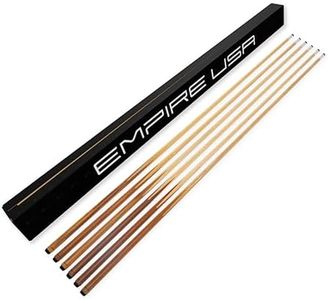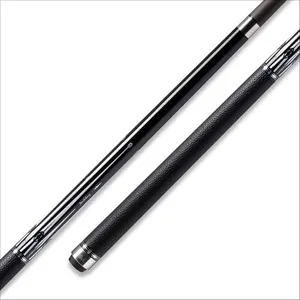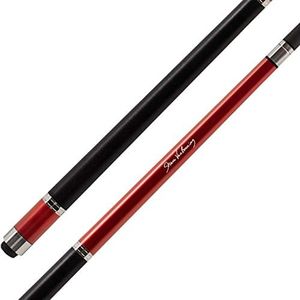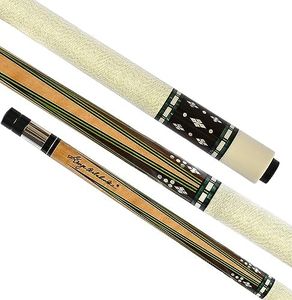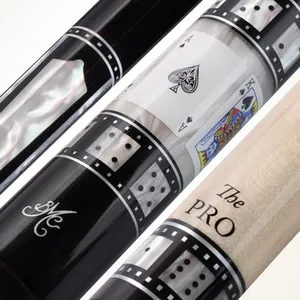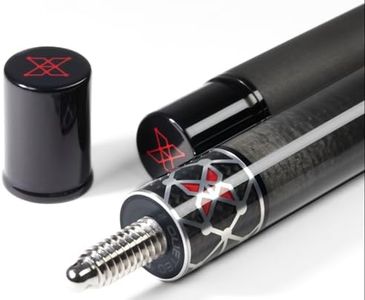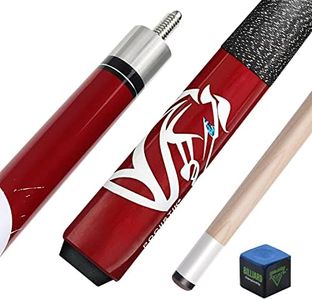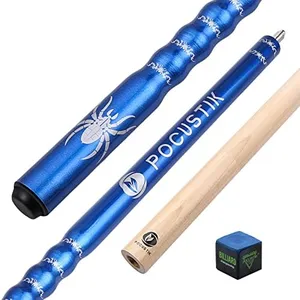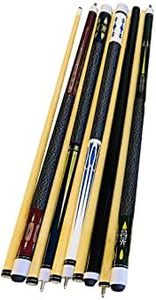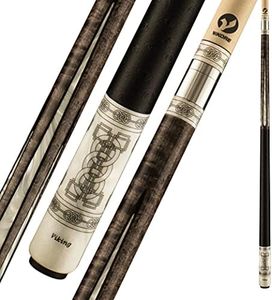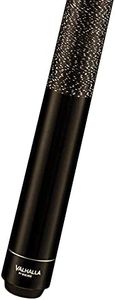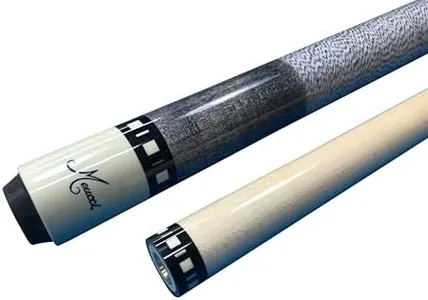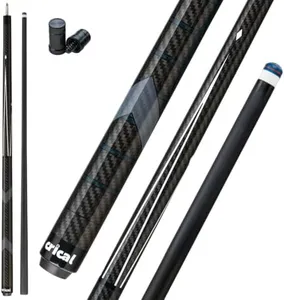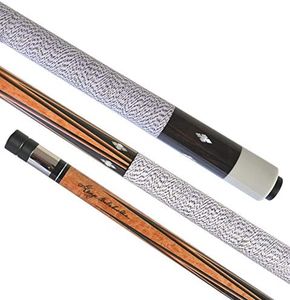10 Best Professional Pool Cues 2026 in the United States
Our technology thoroughly searches through the online shopping world, reviewing hundreds of sites. We then process and analyze this information, updating in real-time to bring you the latest top-rated products. This way, you always get the best and most current options available.

Our Top Picks
Winner
Cuetec Cynergy SVB Generation 2 Carbon Fiber Pool Cue (Black, 12.5mm Tip)
The Cuetec Cynergy SVB Generation 2 is a professional-grade pool cue designed for serious players looking for precision and durability. Its 12.5mm Tiger Sniper laminated soft tip is well-suited for controlled shots, allowing better spin and accuracy. The shaft is made from carbon fiber composite, which is lighter and more resistant to warping compared to traditional wood shafts, helping maintain consistent performance over time.
The core features A+ grade kiln-dried Canadian maple, known for its strength and smooth hit, while the genuine pebbled full-grain leather wrap provides a comfortable, non-slip grip during play. Aesthetic touches like the 10-point crown design with synthetic abalone and precision-cut silver rings add a classy look without compromising function. Cuetec’s cues typically balance well for both power and control, and its limited lifetime warranty is a reassuring bonus for long-term use.
The carbon fiber shaft might feel different for players used to traditional all-maple cues, and the price can be higher than basic models. This cue suits intermediate to advanced players who want a reliable, stylish, and high-performance stick that stands up to regular use.
Cuetec Cynergy SVB Gen One Ruby Red Pool Cue
Most important from
92 reviews
The Cuetec Cynergy SVB Gen One Ruby Red Pool Cue is designed for those serious about their pool game. Its standout feature is the Cynergy 15K carbon fiber composite shaft, which offers durability and a smooth stroke. This shaft is paired with A+ grade kiln-dried Canadian Maple, ensuring a solid and reliable hit each time. The cue's length is standard at 58 inches, which suits most players comfortably, and its weight is well-balanced at 2 pounds, making it easy to handle during long games.
The 12.5mm tip size is ideal for precise shots and control, which is crucial for professional players. The Irish linen wrap provides a secure grip, enhanced by the satin finish that gives it a sleek look. The Cuetec Acueweight System allows for easy weight adjustment, catering to personal preferences. Additionally, the CT joint protectors and Cynergy cleaning wipes included add value by extending the cue's lifespan and maintenance.
While it ranks #211 in Billiard Cue Sticks on Amazon, it might not be the top choice for everyone due to its mid-range positioning in the market. The one-year manufacturer warranty is a plus but falls short compared to longer warranties offered by some competitors. This cue is an excellent fit for unisex-adult players looking for a high-quality, customizable, and stylish pool cue.
Most important from
92 reviews
BALABUSHKA Special Limited Edition (SLE4B - Rosewood) Pool Billiard CUE - 4TH Edition
The BALABUSHKA Special Limited Edition (SLE4B - Rosewood) Pool Billiard Cue is a prestigious choice for professional pool players. It boasts a Birdseye Maple Forearm with a light stain and a 4-point Rosewood splice, which not only enhances its aesthetic appeal but also contributes to its durability. The cue comes with two pro-tapered, low deflection Canadian maple shafts, ensuring precise and accurate shots. The stainless steel collar with a 5/16-14 pin and piloted joint offers solid and dependable joint integrity, which is crucial for consistent performance.
The cue is well-balanced, making it easy to handle and control during games. Additionally, the Irish linen wrap with white and light green specs provides a comfortable grip, reducing slippage during intense matches. On the downside, the limited production of only 50 cues means it might be challenging to obtain one, and the random selection of numbers might not appeal to those who prefer a specific number. The cue's price is likely to be high due to its limited edition status and high-quality materials, which might not be suitable for casual players or those on a budget. Despite these drawbacks, the BALABUSHKA SLE4B cue is an excellent investment for serious players who value performance, craftsmanship, and exclusivity.
Buying Guide for the Best Professional Pool Cues
Choosing the right professional pool cue can significantly impact your game. A good cue should feel comfortable in your hands, suit your playing style, and enhance your performance. When selecting a pool cue, consider factors such as weight, length, tip size, shaft material, and balance. Understanding these key specifications will help you make an informed decision and find the best fit for your needs.FAQ
Most Popular Categories Right Now
